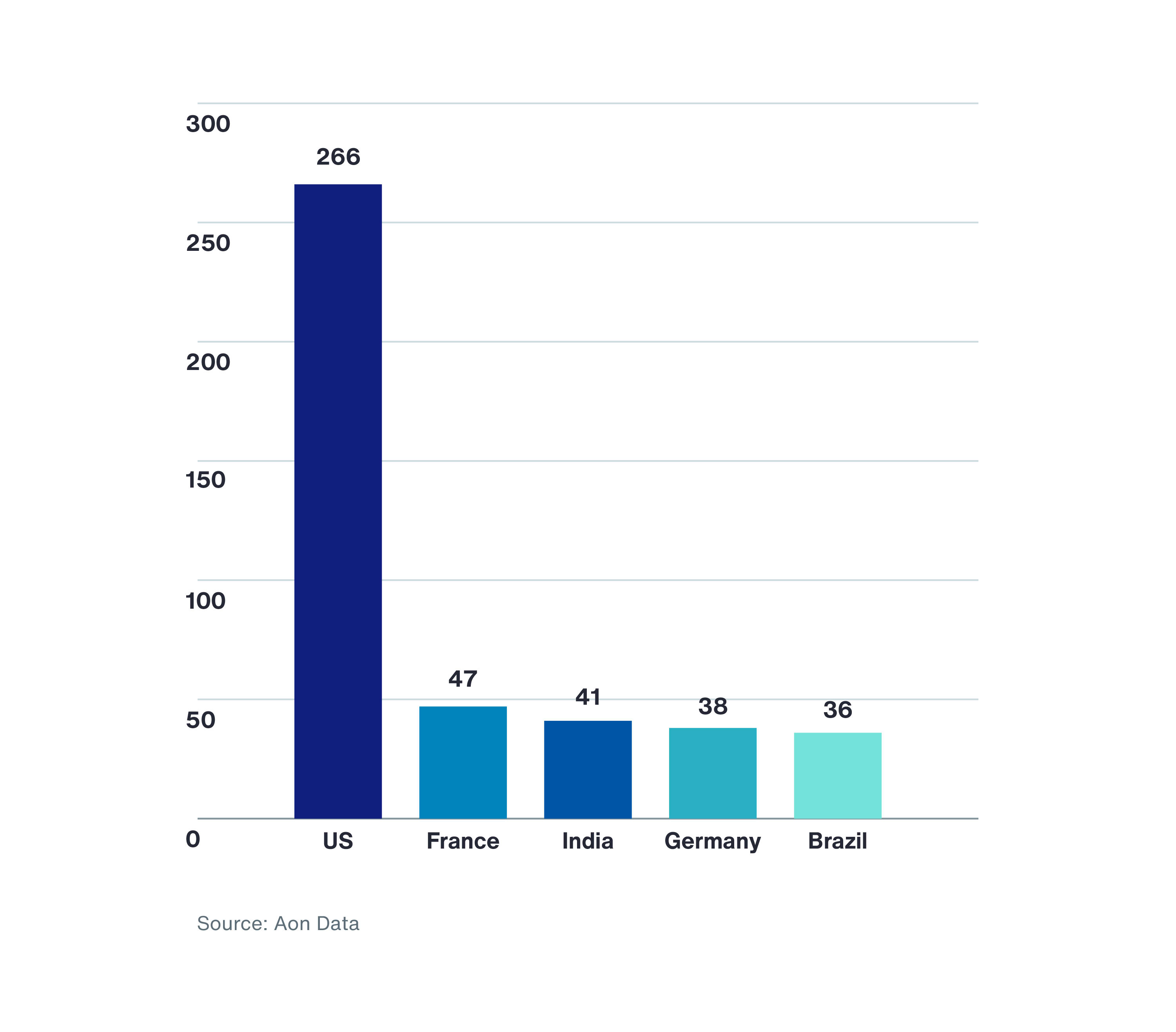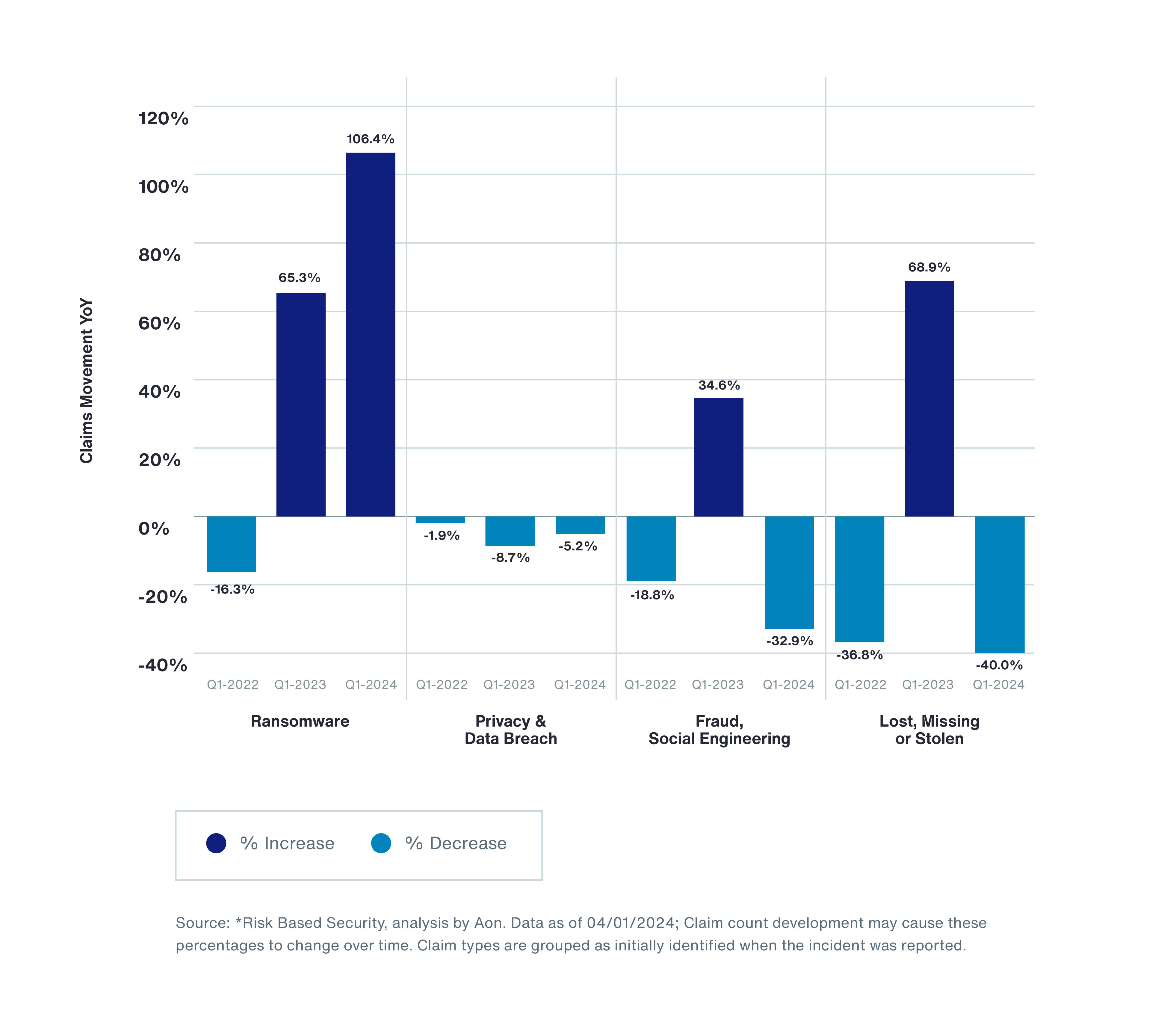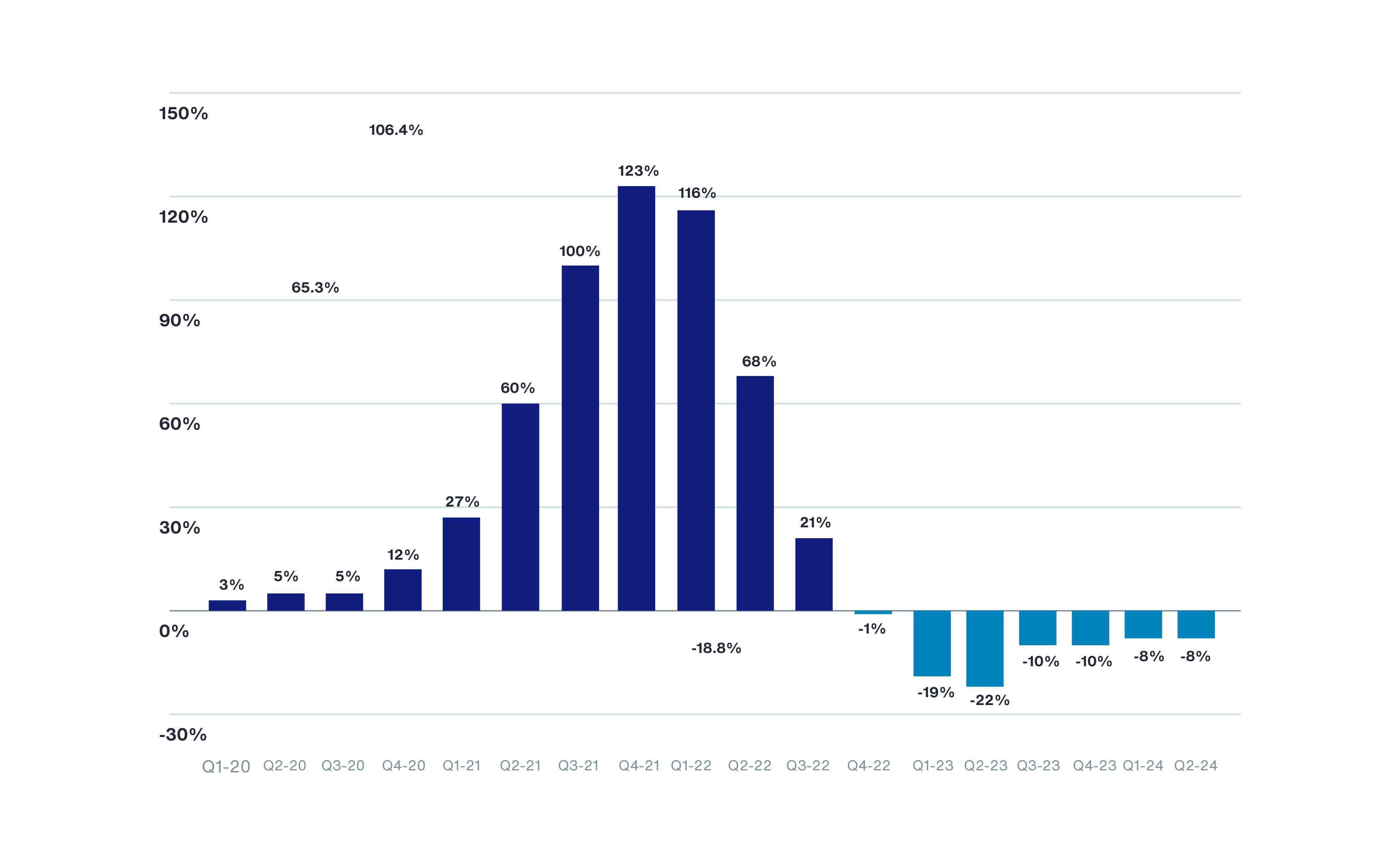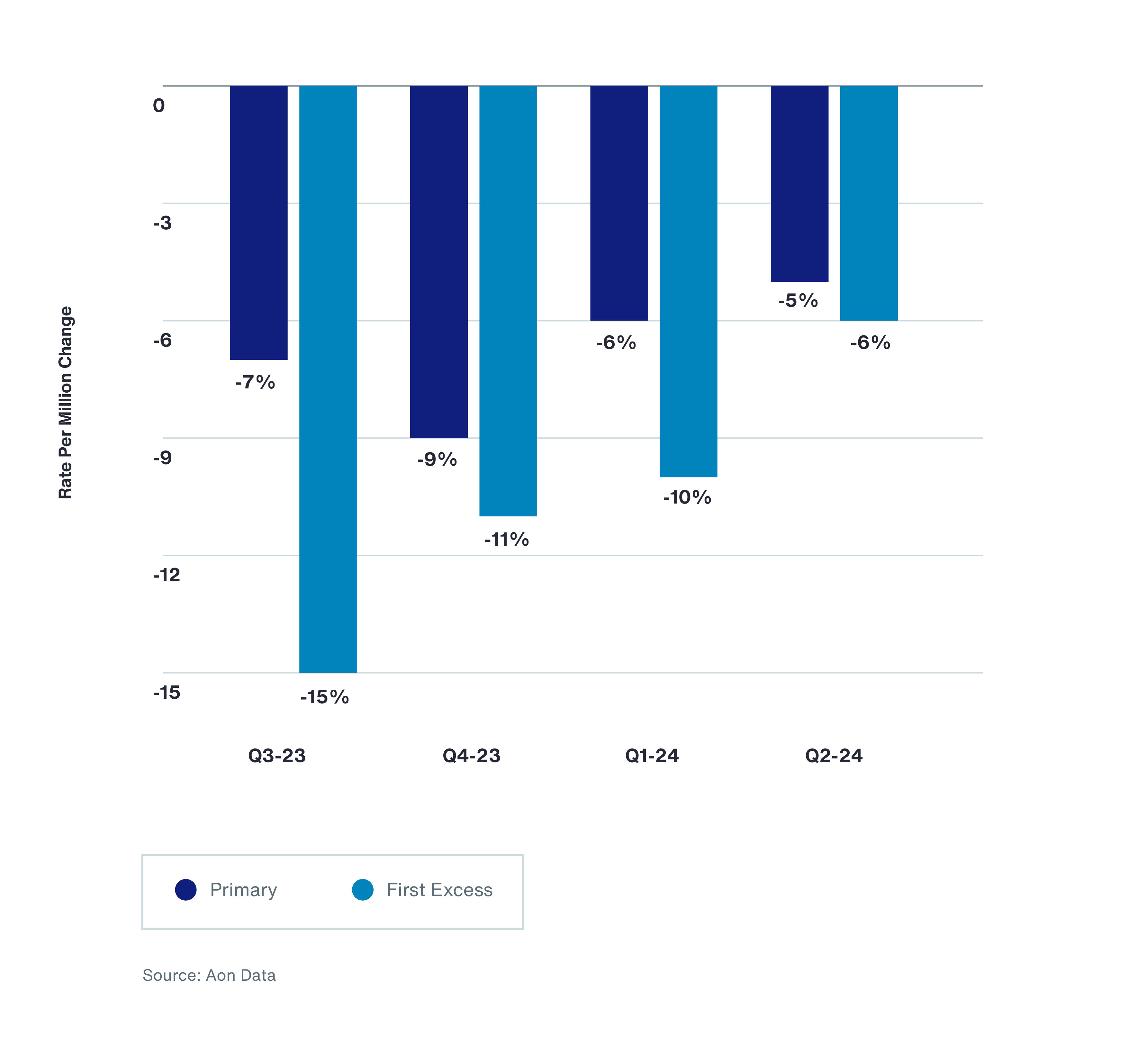Buyer-friendly market conditions continue, characterized by healthy competition, abundant capacity and incumbent
insurers seeking to retain renewals and potentially expand their participation.
Risk differentiation is important to insurers, and they have priced it accordingly. Insurers continued to seek
underwriting data and best-in-class network security controls, but underwriters have shifted to also focus on
understanding and ensuring best-in-class privacy controls and policies.
“Given the amount of competition in the U.S., especially with larger programs in the high excess space and middle
market segment, we are seeing pressure from underwriters who need to grow their books,” says Matt Chmel, chief
broking officer for Aon’s Cyber Solutions practice in North America. “That’s a dynamic that is pushing against some
of the current claim trends.”
U.S. loss ratios, as reported to the National Association of Insurance Commissioners (NAIC), have decreased three
points to 42 percent in 2023, reflecting stronger controls and increased retentions. At the same time, cyber
premiums decreased less than one percent. The key is insurer profitability; insurer combined ratios on average stood
at a robust 73 percent, as reported to the NAIC.1
Canadian insurers are also in growth mode, creating a competitive market with decreased rates from 10 percent to as
high as 50 percent in some cases.
“There is ample capacity across most industry sectors. We can generate traction in multiple offers across most risks,
even for clients who don’t have best-in-class controls,” says Katie Andruchow, Aon’s cyber broking practice leader
in Canada. “This is not only generating premium movement, but also creativity around insurance coverages.”



















































































































































